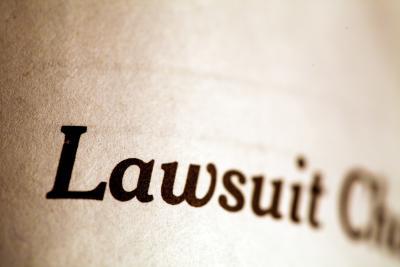Structuring Lease Terminations
Structuring Lease Terminations
by Bryan Mashian, Esq.
A frequent way to address the financial difficulties of a business in today’s market is for the landlord and the tenant to agree to an early termination of the lease. While seemingly simple, lease terminations could involve significant legal issues for both landlords and tenants.
Fraudulent Transfer
- A lease termination may be treated as a fraudulent transfer under bankruptcy laws where the tenant does not receive “reasonably equivalent value” and the tenant is or becomes insolvent because of the lease termination. Typically, the lease is a liability for the tenant but a lease can be an asset if it is long term and at below market rates.
- Bankruptcy courts are not consistent on whether or when a lease termination will be considered a fraudulent transfer. But, the parties should plan to avoid a lease termination being considered a fraudulent transfer, since then the bankruptcy trustee can undo the lease termination and regain the right to occupy the premises, and require return of any money paid for the lease termination.
- The parties should obtain an appraisal from an independent third party to make sure that the money paid or received was the substantiated value (negative or positive) of the tenant’s leasehold.
- The landlord should obtain representations and warranties that the tenant isn’t insolvent and won’t become insolvent by terminating the lease.
Hazardous Materials
- A significant issue in negotiating a lease termination – especially in industrial properties – is the environmental condition of the property. The landlord wants to avoid responsibility for remediating hazardous substance contamination caused by the tenant. Conversely, the tenant will want a general release from liability arising from any source, such as hazardous materials migrating to the premises from neighboring properties or placed on the premises by prior or future tenants.
- To have a clean separation, the parties should obtain an environmental report (commonly referred to as a Phase I report) to establish the environmental condition of the premises at the time of the lease termination. Such a report provides a peace of mind to both parties since the landlord can provide the Phase I report to subsequent tenants and have them acknowledge receiving the premises free of any hazardous materials, and the outgoing tenant can use the Phase I report to defend itself against claims that it contaminated the property.
- If the Phase I report indicates contamination, or if a tenant is known to have used hazardous materials in its business, then the landlord should investigate and verify the environmental condition of the premises before agreeing to the lease termination – whether or not the tenant participates or cooperates.
- Parties should also use representations, warranties, and indemnities to allocate enviornmental risks.
Mortgage Loan Compliance
- As part of a typical institutional real estate mortgage loan, the landlord assigns the property’s leases to the lender and agrees not to terminate or amend any of the leases without the lender’s consent.
- So, before terminating a lease, the parties should make sure that the lease termination doesn’t violate the terms of the mortgage loan or collateral assignment of the leases. If so, the landlord should have the lender release its security interest or consent to the lease termination.
- Also, if the tenant and the mortgage lender have signed a subordination, nondisturbance, and attornment agreement, then the landlord and the tenant usually can’t terminate the lease without the mortgage lender’s consent.
- If the mortgage lender were to consent to a lease termination, the lender would typically require that any money being paid by tenant to terminate the lease be paid directly to the lender to reduce its loan balance.
Subleases and Assignments
- Often tenants assign a lease or sublease part of their space without obtaining the landlord’s consent despite consent being required under the lease.
- The landlord should determine if there are any parties in possession of the space besides the tenant and be sure to have anyone with any rights under the lease sign the lease termination agreement. If the tenant has sublet part or all of the premises, the consensual termination of the master lease by landlord and tenant generally will not terminate a sublease.
- The landlord should require the tenant to terminate any subleases and give possession of the premises back to the landlord free and clear of any subtenants or other occupants.
Tenant Improvements
- The landlord ideally would like the tenant to deliver the premises suitable for immediate occupancy by the next tenant in order to minimize loss of revenue. The tenant, however, may prefer to remove select items and not spend any more time or money restoring the premises. So, the condition of the premises and the parties’ duty to remove and restore often gets negotiated.
- Instead of the tenant actually performing the removal and restoration work, the tenant may offer to pay the landlord to do so. This arrangement, however, can sometimes be more advantageous to the landlord. If the next tenant expresses a need for the previous tenant’s improvements, then the landlord profits by not performing work for which the former tenant already paid the landlord. If, on the other hand, the new tenant requires the landlord to retrofit the premises, the landlord is no worse off, and indeed may save money by performing all of the construction at once.
Release of Claims
- The tenant will usually request a release for any claims arising prior to the lease termination, such as payment of rent, common-area expenses, taxes, insurance, or utilities.
- Inadequate or improper documentation can lead to the landlord’s inadvertent release of the tenant from other obligations.
- Instead of “canceling” the lease, the parties can still achieve the same practical result of relieving the tenant of future lease liability by amending the lease expiration to an earlier agreed date. The parties can provide assurance to each other about potential claims by warranting to each other that no defaults or breaches are outstanding or known as of the termination date.
- The parties may also include unilateral or mutual releases in the agreement if they are resolving a dispute or settling a lawsuit by terminating the lease.




































